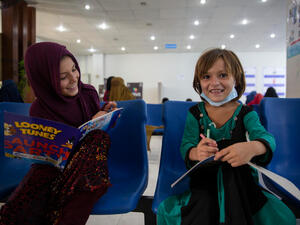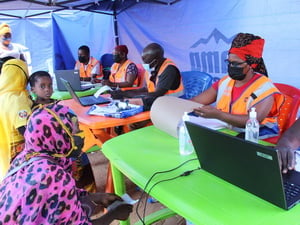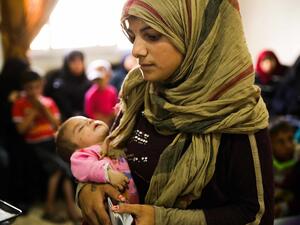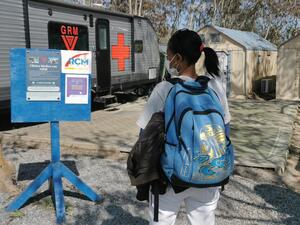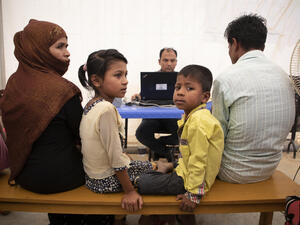Registration of refugees begins in eastern Sudan
Registration of refugees begins in eastern Sudan
Over the weekend, the government of Sudan and UNHCR launched a joint registration operation for tens of thousands of mostly Eritrean and Ethiopian refugees living in eastern Sudan. The registration, due to last for several months, officially started on Sunday (March 2). It is estimated that more than 133,000 refugees will benefit from the exercise.
Out of these 133,000 refugees, 95,000 live in open camps in Kassala, Gaderef, Jezzira, Sinar and the Red Sea States of Eastern and Central Sudan, while about 38,000 live in urban and rural areas of these states. Khartoum, the capital, is said to be hosting close to 30,000, who also need to be verified and registered.
The massive operation seeks to address the plight of refugees who after decades in Sudan are still relying on humanitarian assistance because of lack of access to employment, compounded by lack of proper identification documents. While these refugees have mostly enjoyed protection in Sudan for the past four decades, it has been extremely difficult for most of those living in the east and in Khartoum to support themselves, particularly when they lack proper identification documents.
By registering these populations, both the government of Sudan and UNHCR hope to update the refugee statistics and to determine the best solution based on the refugees' profile. Some will require continued humanitarian support because of their vulnerability. Others may require self-reliance support while a number may be in need of resettlement in a third country because they can neither remain in Sudan nor repatriate. Most importantly, it will translate into reconfirmed refugee status for nearly 70,000 Eritreans who lost it following the application of the 2002-2004 Cessation Clause.
The registration will also take into account the arrival of asylum seekers who totalled up 10,000 since the beginning of last year. Nearly 90 percent of them originating from Eritrea cited forced army enrolment as their main reason for flight. Others are from Ethiopia and Somalia. The last general registration took place in 2001.
After being in exile for four decades, Eritrean and Ethiopian refugees are among the most protracted refugee populations in the world.


